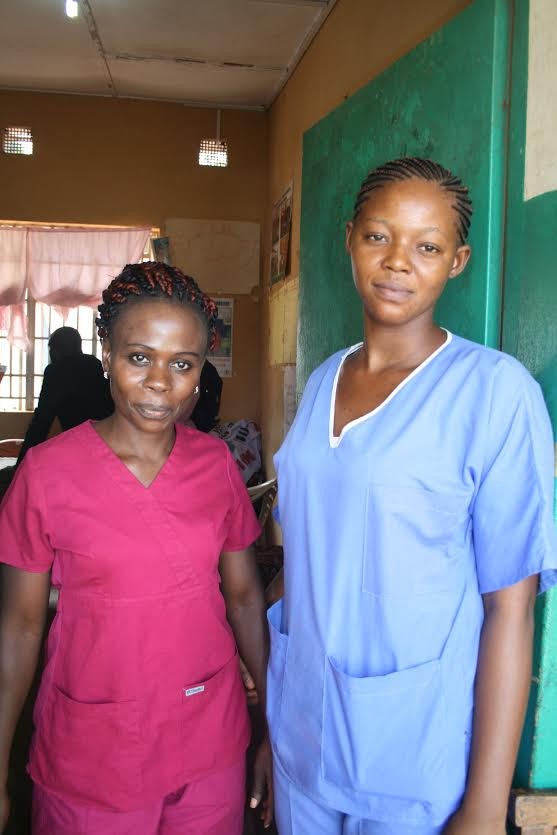
March 2016—With no new reported cases of Ebola, the World Health Organization (WHO) declared West Africa free of the deadly disease on Jan. 14, 2016—a day of joy and celebration for the region. In Sierra Leone alone, nearly 4,000 people had died during the latest outbreak of Ebola—a devastating toll for a country still struggling with the after-effects of a prolonged rebel war.
But the joy and celebration was short-lived. Only hours after declaring West Africa Ebola-free, the WHO announced that a young woman in Sierra Leone, 22-year-old Mariatu Jalloh, had died from the disease on Jan. 12. Because Jalloh had traveled to Sierra Leone’s northern border area while ill, fears were fueled that the country would once again find itself in the crosshairs of this relentless disease.
People across the country held their breath. Would the challenges that the government faced two years earlier when the outbreak began—inadequate treatment facilities; a lack of training on infection prevention and control; not enough health care workers; and insufficient information on the state of the epidemic—allow Ebola to spiral out of control again?
Demonstrating a much better understanding of the disease and a strengthened capacity to contain it, the government, with the support of numerous partners, sprang into action. A rapid response team consisting of representatives from the Government of Sierra Leone, USAID, the Centers for Disease Control and Prevention, the U.K. Department for International Development, the U.N. Children’s Fund, and the WHO deployed on Jan. 15 to support district and local response efforts in areas that Jalloh had visited.
Immediate precautionary measures were a top priority. With the support of the U.N. Children’s Fund, temporary isolation units for suspected or confirmed cases of Ebola were established. The government monitored more than 150 of Jalloh’s contacts (many considered at high risk of contracting the disease), while the U.N. World Food Program ensured that households under observation received food and other supplies.
Within days, the government initiated a widespread vaccination campaign targeting both high- and low-risk contacts, and engaged local leaders and communities early and often to build support. In one district alone, 20 community leaders received the vaccine to highlight the campaign’s importance.
Partner organizations such as Concern Worldwide and the Sierra Leone Red Cross Society used trained local coordinators in high-risk chiefdoms to disseminate effective Ebola messaging.
The result of such swift and decisive action? Only one person who came into contact with Jalloh was infected with Ebola—her aunt, Memunatu Kalokoh, who was quickly treated and quarantined at the Sierra Leone Army Medical Unit in Freetown. She was released on Feb. 4 after testing negative for the virus.
“It [the swift response to new cases] illustrates the capacity now in place in Sierra Leone to manage such emergencies should Ebola resurface in the future,” said Dr. Anders Nordstrom, the WHO country representative in Sierra Leone.
After a waiting period of 42 days with no new Ebola cases, the WHO declared that the country was once again Ebola-free on March 17.
Authorities warn it is likely that Ebola will resurface in Sierra Leone, Guinea and Liberia, but Sierra Leone’s most recent experience with Ebola is cause for optimism. Stronger prevention, detection and response systems are in place, making it more difficult for new Ebola cases to escalate into a widespread epidemic.
Although much progress has been made, the Ebola epidemic took a severe toll on already fragile health care systems in these countries. Much more needs to be done to restore essential health services, rebuild health systems, and build capacity in the three countries to address future public health threats. USAID and its partners are working with the host governments to support these goals.
USAID is also working to strengthen the global health security infrastructure in West Africa and other regions to prevent avoidable outbreaks, such as Ebola, and enable countries to detect public health threats and respond rapidly and effectively to future outbreaks. This includes promoting effective health institutions and personnel, building emergency management response capacity, and expanding surveillance and laboratory systems.
In Sierra Leone, where people are eager to leave the ravages of Ebola in the past, life may never be the same. But there is now a sense that the nightmare of the last two years could finally be over.
LINKS
Follow @USAIDWestAfrica, on Facebook







Comment
Make a general inquiry or suggest an improvement.